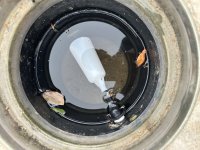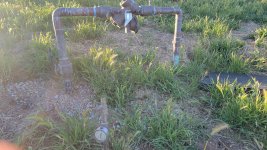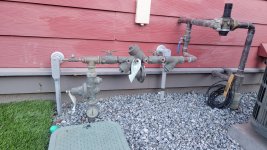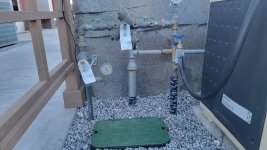Except there's already a BFP at the meter. So the most that would be contaminated is yourself. Which is why I said it shouldn't be legislated for pool builds or the like. It's like a seatbelt law, and shouldn't exist ('ll give a pass to those requiring it of children, since they likely lack the autonomy to assess their personal risk).
In response to the dirty pool pics, I assure you there is more non-organic concerns IN the municipal supply than there is in an algae growing pool.
Wow, lots to unpack. I'm not sure on which municipality you're basing these "facts," but I can say with some confidence they are not universal truths. I shouldn't guess on the percentage, but I'll go out on a limb and say most residential properties have no such BFP protection, and it's not built into water meters, if that's what you were getting at (I've never heard of that, anyway).
And based on that, it is not unreasonable at all for a municipality to require BFP devices. In fact, they are already a requirement for commercial buildings in many (if not most) cities. I'm referring to California, so I can't speak to the rest of the country. Obviously the OP's city is all over this, too. This is nothing like the seat belt law, which for the most part is intended to protect people too, uh,
unwise to protect themselves. No, a requirement for a BFP has much less to do with protecting the individual's water supply, and everything to do with protecting the water supply of his neighbors, possibly for miles around. And, IMO, that is exactly what government is supposed to be doing.
Again, depending on where you live, it's not at all fair to say that a municipal water supply is less safe for humans than the water in a swimming pool. Many (most?) municipalities provide annual water quality reports, but I know from my buddy (who worked at the water provider for one of CA's largest cities) that these water quality tests go on constantly, non-stop. And from his description of them, no pool would pass 'em. He also believes that it is just a matter of time before it is a requirement for all residences to have BFPs, just like it is now for commercial properties. He figures they'll start with new construction. Not sure how they'd handle existing residences. But that's how I know it is not a given that residences or water meters have BFPs, because they mostly don't.
As for the valve, they will absolutely close (I've been using a cheap hunter one for nearly a decade on mine). But I'm not understanding where the second downstream valve is coming from (although they will do that also, since most sprinkler installations have a master valve actuated the same way to govern over the individual circuit valves as it is). I was suggesting replacing the ball valve at the pool equipment with an automated.
I'm not sure what point you're making about a "cheap hunter valve" closing. The type of auto-fill valve the OP has is closed most of the time. It opens when the pool's water level drops. The valve is underwater, somewhere near the pool, and so has no "natural" anti-siphon protection afforded when a valve's outlet is above the waterline. So that's why the need for the BFP upstream of it.
While that auto-fill vale is closed, it's under pressure, and many times (most?) the water line supplying that valve is
before the home's pressure regulator, which means it can conceivably be under a lot of pressure. If you put a sprinkler valve upstream of that auto-fill valve, instead of a proper pressure-rated BFP, then that full-on water pressure is constantly applied to the sprinkler valve's anti-siphon components (springs and diaphragms and what not) that are not rated to withstand that level of pressure 24/7. And they
will eventually fail. There's a reason a plastic Orbit sprinkler valve costs 17 bucks, and the OP's BFP valve is north of $500 and constructed of brass.
Think about it, those sprinkler valve anti-siphon components are virtually never under real pressure. Their subjected to any at all only when the sprinkler valve is open, and the water is flowing out the other side to sprinklers. Anyway, the point is, a sprinkler valve upstream of that auto-fill valve is not the correct application. And as I mentioned, it can't be tested, so you'd never know if the anti-siphon (BFP) protection was working or not. The fact that you might have had an arrangement like that that is still working proves nothing, and is not the kind of anecdotal advice that is OK to share with the many people that might read this thread (not just the few of us that are contributing to it).
And if you're describing a setup that has a non-pressure rated sprinkler valve upstream of a secondary tier of sprinkler valves, that would also violate the same safety standards. Just because you've seen it somewhere, even many times, doesn't make it OK.
And of course, all of this is otherwise moot, because the OP's city requires the correct part and for it to be inspected. Replacing that part with a sprinkler valve would not only not be a good idea, or safe, but it's not allowed in the OP's case. Which is what inspired my original rebut to your post.
So, again, pardon me for the push back. As I mentioned, I learned all this from a pro that worked for decades at a major municipality in California. He was personally responsible for testing commercial property BFP valves all over the city. The rest of the time he spent monitoring the water quality at the plant that supplied the water to about a million people. I trust what he told me.







